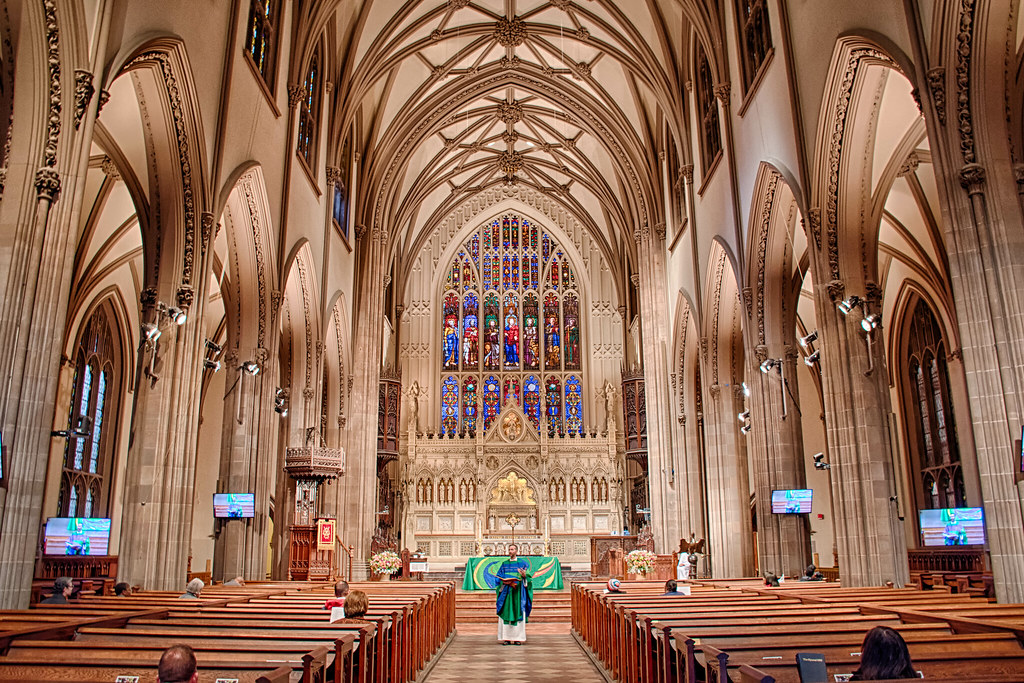The 4 steps that made Christianism a global religion.

Trinity Church - New York City
Christianity, one of the world’s largest religions, has a rich history that traces its roots back to the 1st century AD. Let’s explore the political role in the development of Christianity.
In the 1st century AD, Christianity emerged within the Roman province of Judea. It was rooted in the teachings of Jesus of Nazareth, who preached a message of love, salvation, and the kingdom of God. His followers, known as disciples, played a crucial role in spreading his teachings after his crucifixion and resurrection. Notably, during this period, most early Christians were Jewish, and the movement remained within the context of Judaism.
The Apostle Paul, a central figure in early Christianity, played a pivotal role in spreading the faith to non-Jewish communities, known as Gentiles. This expansion marked the beginning of a distinct Christian identity and set the stage for the religion’s global reach.
The Edict of Milan (313 AD)
The Edict of Milan, issued by Emperor Constantine and Licinius in 313 AD, was a game-changer for Christianity. It granted religious freedom and tolerance throughout the Roman Empire, putting an end to the state-sponsored persecution of Christians. This newfound freedom led to a rapid influx of converts from various backgrounds and regions, contributing to the religion’s exponential growth.
Constantine recognized that Christianity was growing in popularity within the Roman Empire, and he saw an opportunity to use it as a unifying force. By supporting and aligning himself with Christianity, he believed he could bring a sense of cohesion to the empire, which had been plagued by religious divisions and internal strife. He hoped to create stability and loyalty among his subjects.
The First Council of Nicaea (325 AD)
Emperor Constantine convened the First Council of Nicaea in 325 AD to address theological disputes, primarily the Arian controversy. At the heart of the Arian Controversy was Arius, a priest from Alexandria, Egypt. Arius propagated a belief that diverged significantly from the emerging orthodox Christian doctrine. He posited that Jesus Christ, while divine in some sense, was not co-eternal or co-equal with God the Father. Instead, Arius asserted that Jesus was a created being, a divine entity of a lesser order than God Himself.
The council was instrumental in formulating the Nicene Creed, affirming core Christian beliefs and establishing doctrinal unity. However, not all Christian groups immediately accepted it, leading to centuries of theological debates.
The Edict of Thessalonica (380 AD)
In 380 AD, Emperor Theodosius I issued the Edict of Thessalonica, also known as the “Cunctos populos”, declaring Nicene Christianity as the official state religion of the Roman Empire. This marked a significant shift, elevating Christianity from a tolerated religion to the empire’s official faith. Theodosius actively promoted Christianity and sought to suppress pagan practices and other competing religious traditions.
The Suppression of Paganism (392 AD)
Emperor Theodosius I took further steps to solidify Christianity’s dominance by issuing an edict in 392 AD aimed at suppressing pagan religious practices and closing pagan temples. Theodosius progressively restricted religious practices that were not in line with Nicene Christianity. He implemented laws that curtailed the activities of pagan temples, effectively ending religious tolerance. This shift marked a decisive transition from religious diversity to the dominance of Christianity and the final phase of Christianization within the Roman Empire, as traditional pagan religions declined, and their rituals were prohibited.
Theodosius cultivated close relationships with influential Christian bishops, particularly Ambrose of Milan and Gregory of Nazianzus. These alliances allowed him to garner support from the Christian clergy and gain their endorsement.
As for Constantine, in summary, Theodosius I’s support for Christianity was driven by a combination of personal faith, political consolidation, and a desire for unity within the Roman Empire.
These key events and developments within the first few centuries of Christianity laid the foundation for its growth, theological coherence, and eventual establishment as a major world religion. Christianity’s journey from a persecuted sect to the state religion of the Roman Empire had profound and lasting implications for the course of Western history and religious practice.




